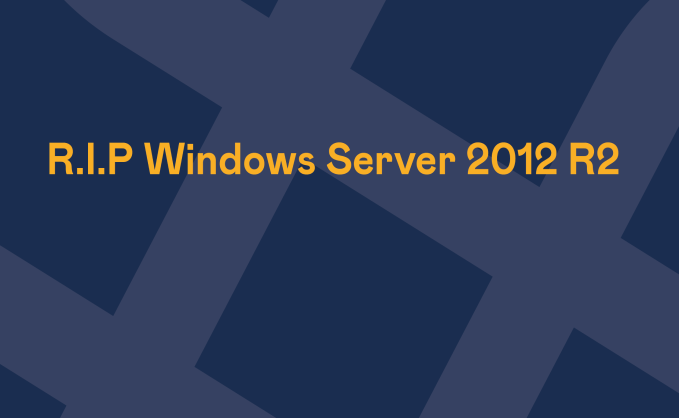If your business is still using Windows 2012 R2 server, then we’re afraid we’ve got some bad news.
In October 2023, Windows 2012 R2 server reached its end of life and, as such, has been retired to the great pile of operating systems in the sky.
This isn’t necessarily a surprise; Microsoft announced that this was happening back in 2018. Since the announcement, the server has been in an extended support phase until it finally reached the end of its lifecycle on 10th October 2023.
Windows 2012 R2 server reaching its end of life means that Microsoft will no longer provide typical customers with updates or fixes. On the surface your server may still work but continuing to do so will place your business at a considerable risk of cyber attacks and viruses.
Essentially, if you are still running Windows 2012 R2 server, you need to act now.
Let us explain a bit more about what’s happening, what you need to do next and what happens if you don’t do anything at all.
What has happened to the Windows 2012 R2 server?
On the 10th October 2023, the Windows 2012 R2 server reached its end of life.
This means that as standard it has now stopped receiving support, security updates or patches from Microsoft, making it a hazard to most businesses using it.
Continuing to run Windows 2012 R2 server in its end of life phase would be a massive risk to your business. We’ll explain a more of that later.
The retirement of the server hasn’t come as a surprise, though. Microsoft announced this was happening back in 2018 which aligns with the pretty rigid 10-year lifecycle of their servers.
What are the risks of operating a server past its end-of-life date?
If you continue to use your Windows 2012 R2 server, you will be putting your business at higher risk of cyber attacks and viruses.
The security updates released for public use that have kept hackers at bay have ended so you are now unable to safely leave your server as is.
Essentially, if you do nothing, you will be using a product that is totally unsupported and unprotected by Microsoft. In some cases, this even limits what Affinity’s engineers can do for you!
This will put all the confidential data that is stored on your server at the mercy of cybercriminals. Should they attack, there won’t be much you can do about it. The damage could be catastrophic.
What should I do next?
You have two long-term options if you want to operate on a secure and protected system:
- Upgrade your server
- Move to the cloud
There are lots of server and cloud options on the market at the minute and we’d be happy to help you find the best option for you!
A short-term option would be subscribing to the Extended Security Updates for Windows Server. A last resort for customers who need to run certain legacy products past the end of support, this is a pretty costly option but can give you a useful extension.
If you’re not sure where to start – or even if you’re not sure what server you are running – please get in touch with our expert team at Affinity.
We’re more than happy to help advise you.
How long have I got to make a decision?
End of life for the Windows 2012 R2 server happened on the 10th October 2023.
If you are still using the operating system, we urge you to look into a solution as soon as you can.
Are there other benefits to upgrading to an alternative solution?
If you decide to find an alternative solution (and you really should), you should also benefit from:
- Improved IT performance and reliability
- Less downtime thanks to built-in resiliency and enhanced monitoring
- Stronger defences against viruses and other threats
Can Affinity help me to find an alternative solution?
Yes, absolutely!
Our expert team are on hand and ready to help you with any questions you might have.



